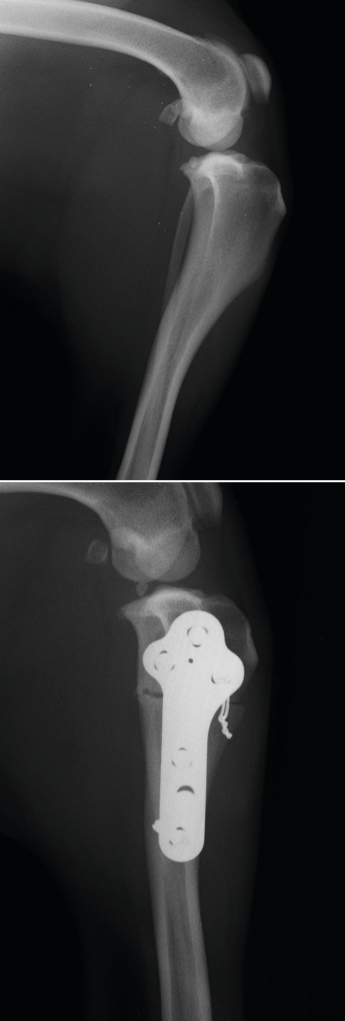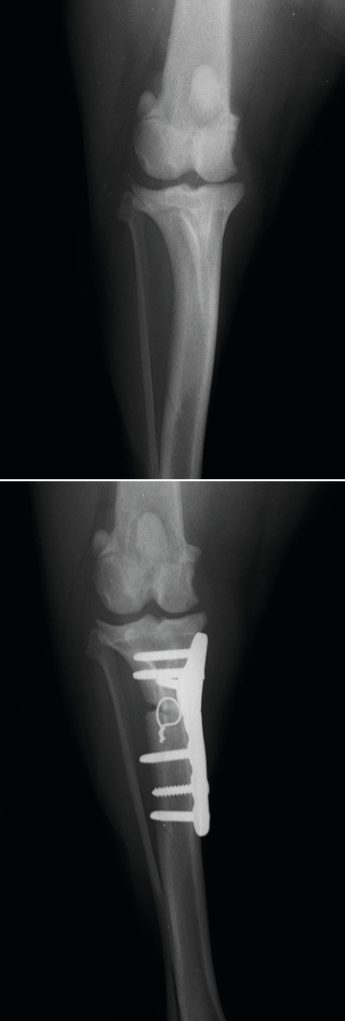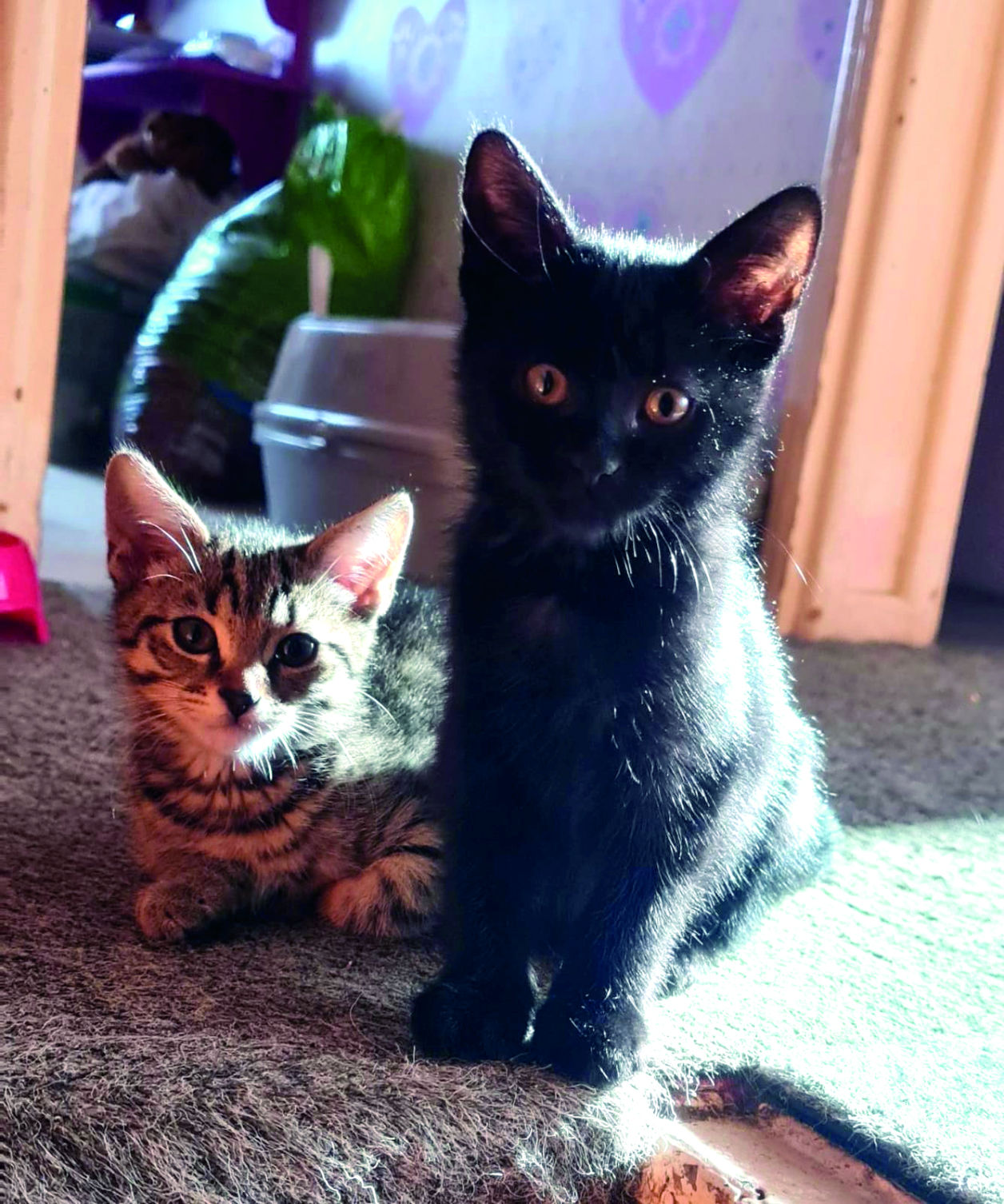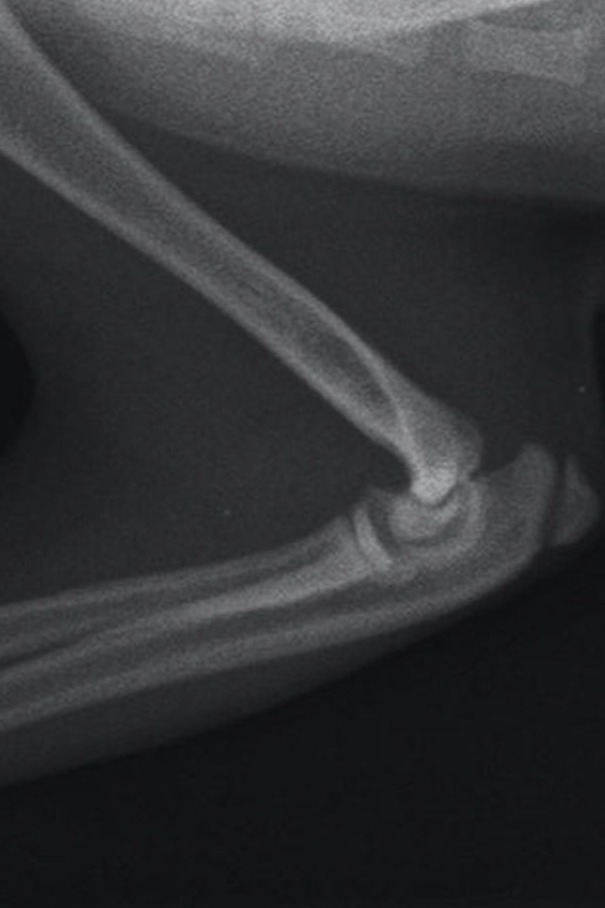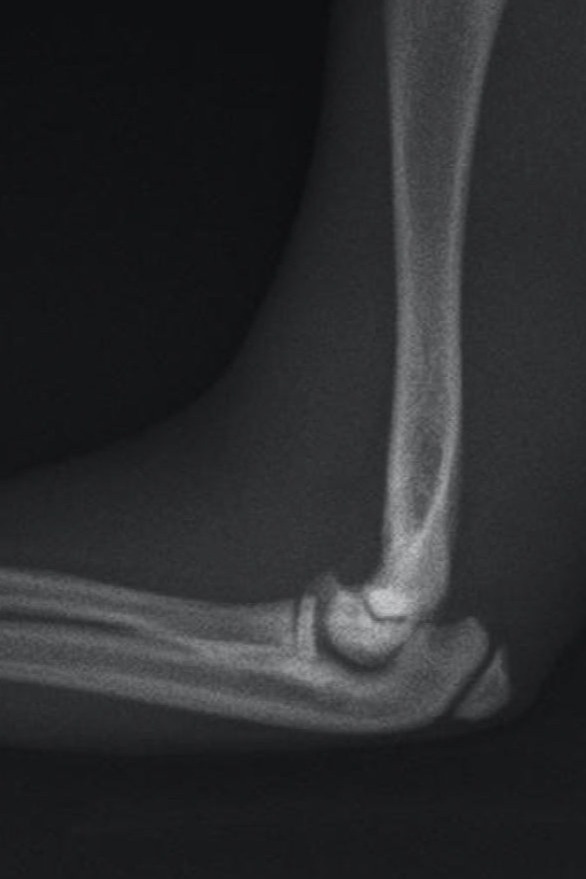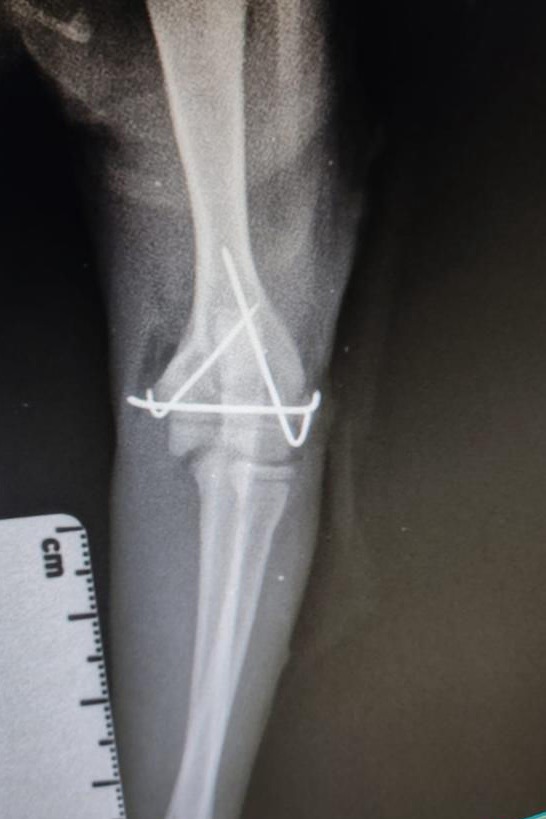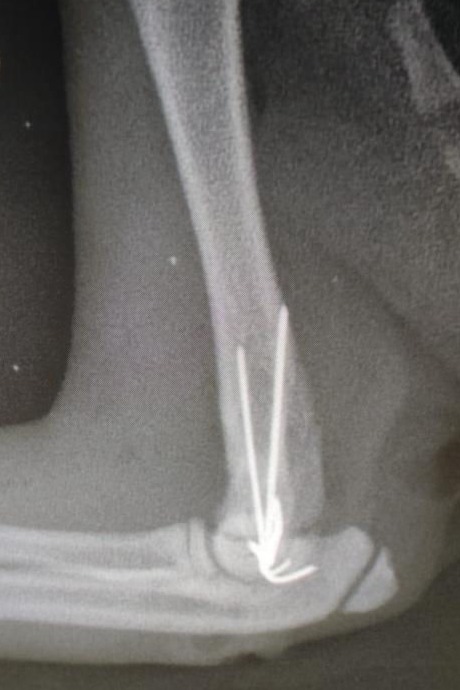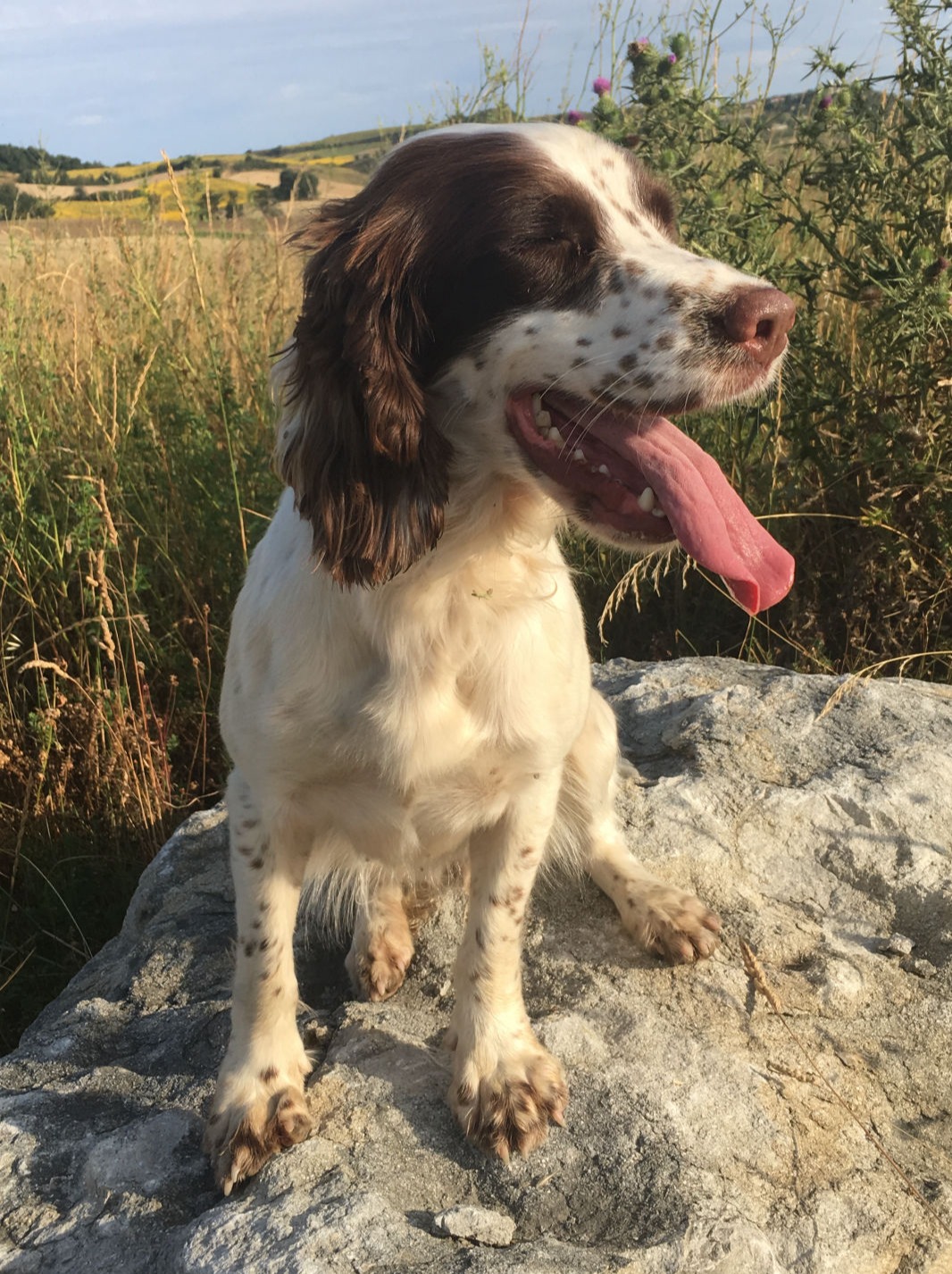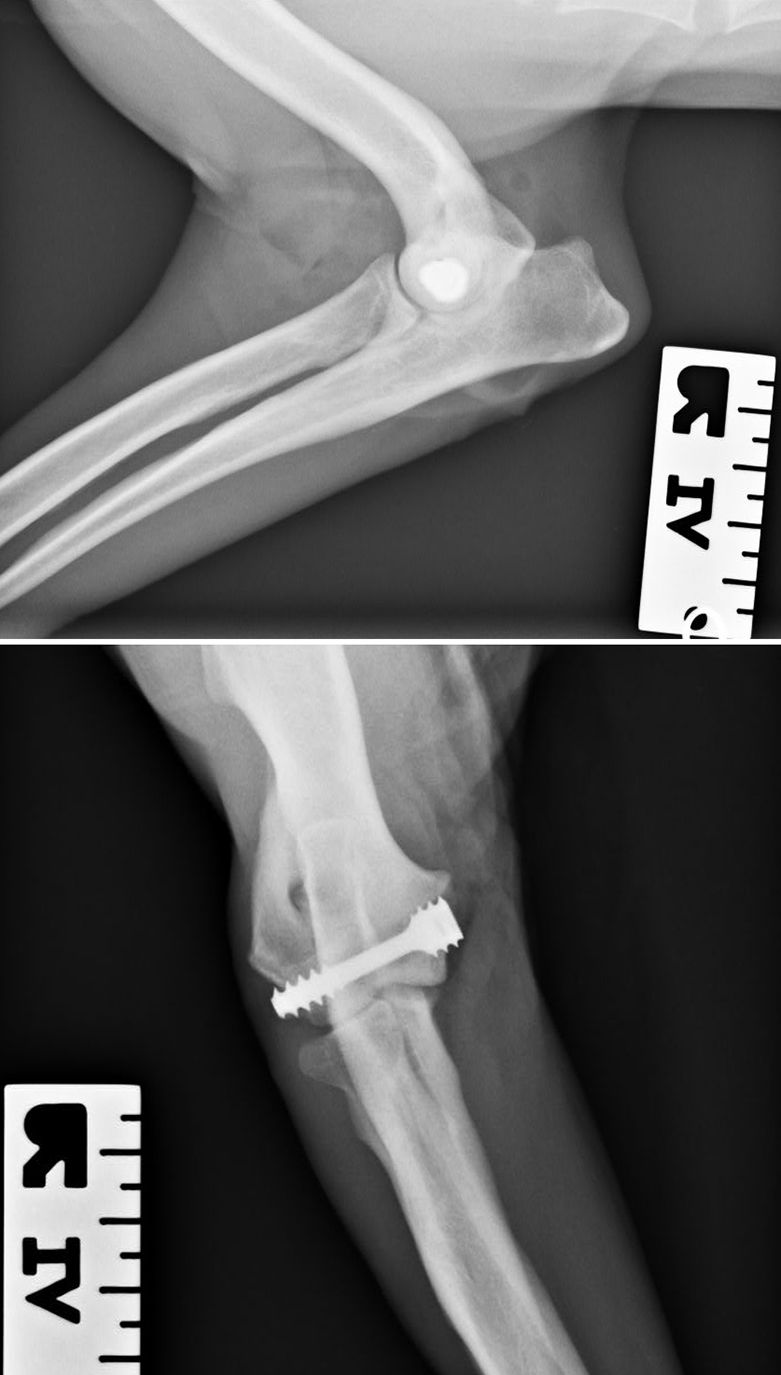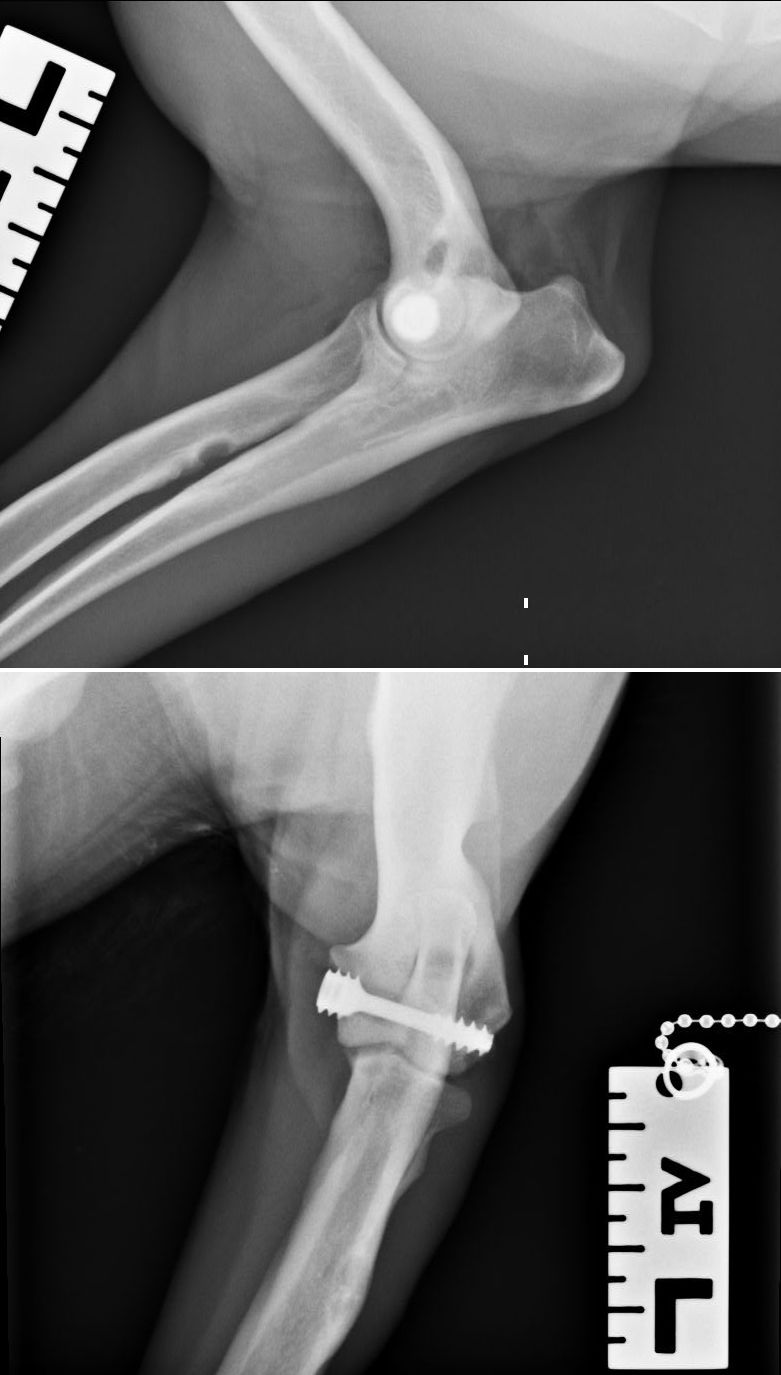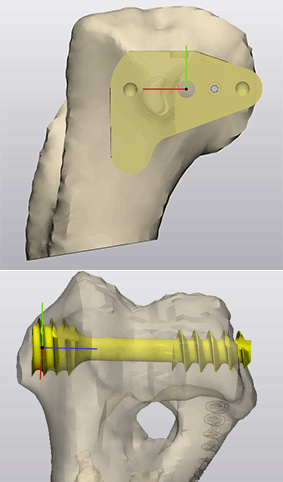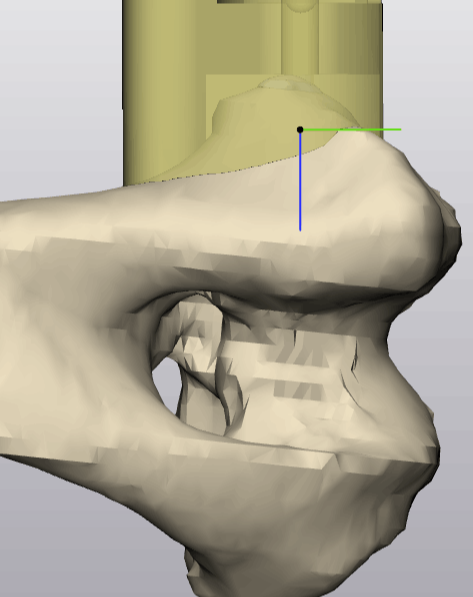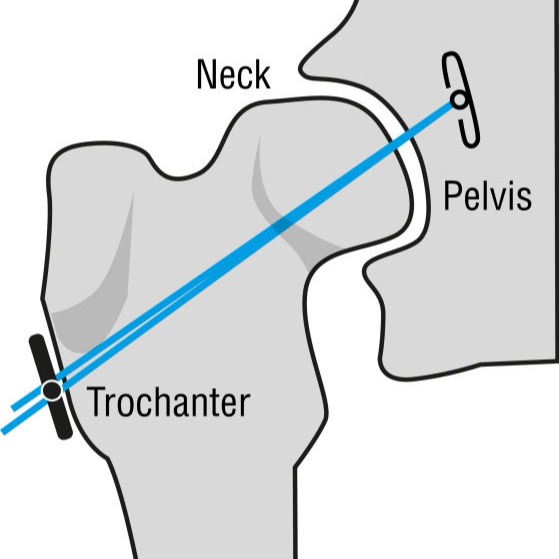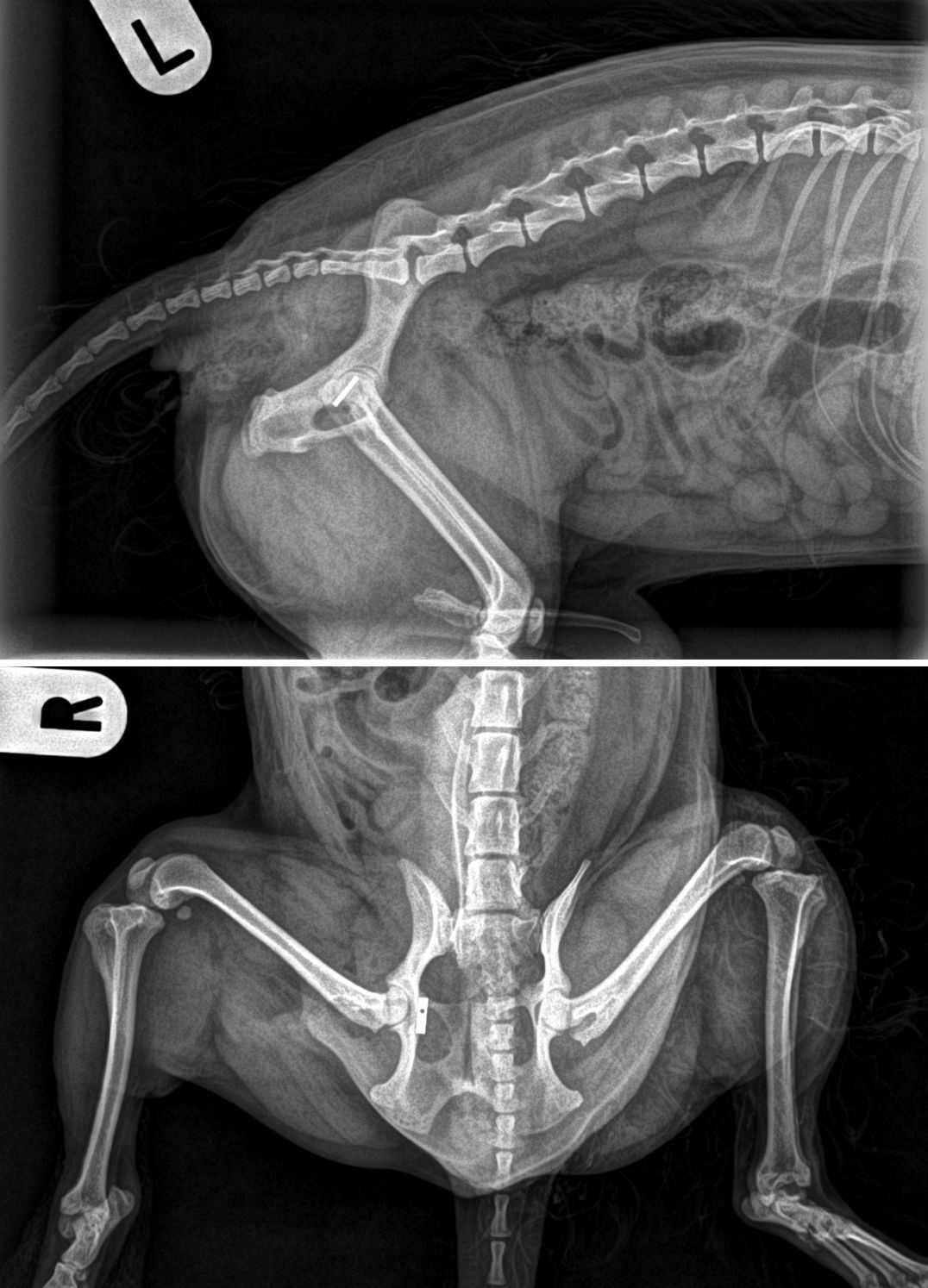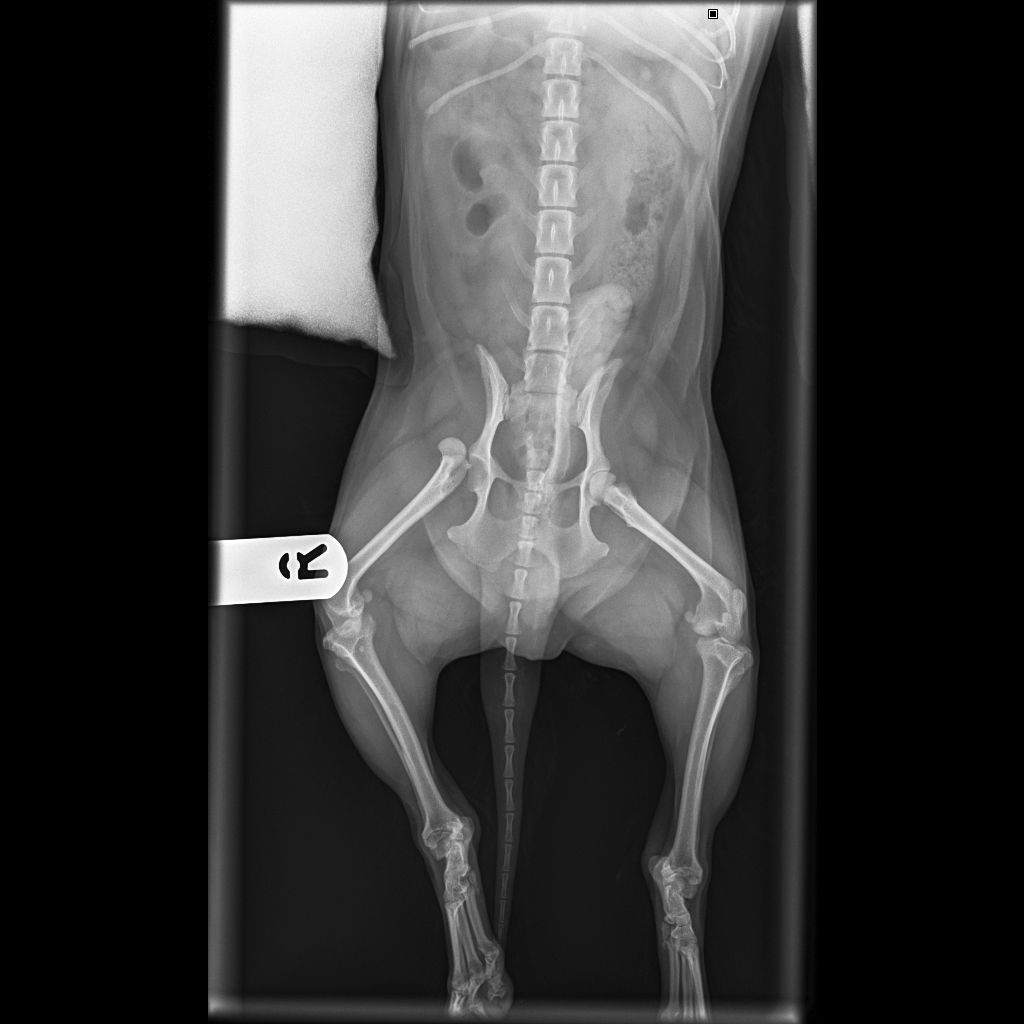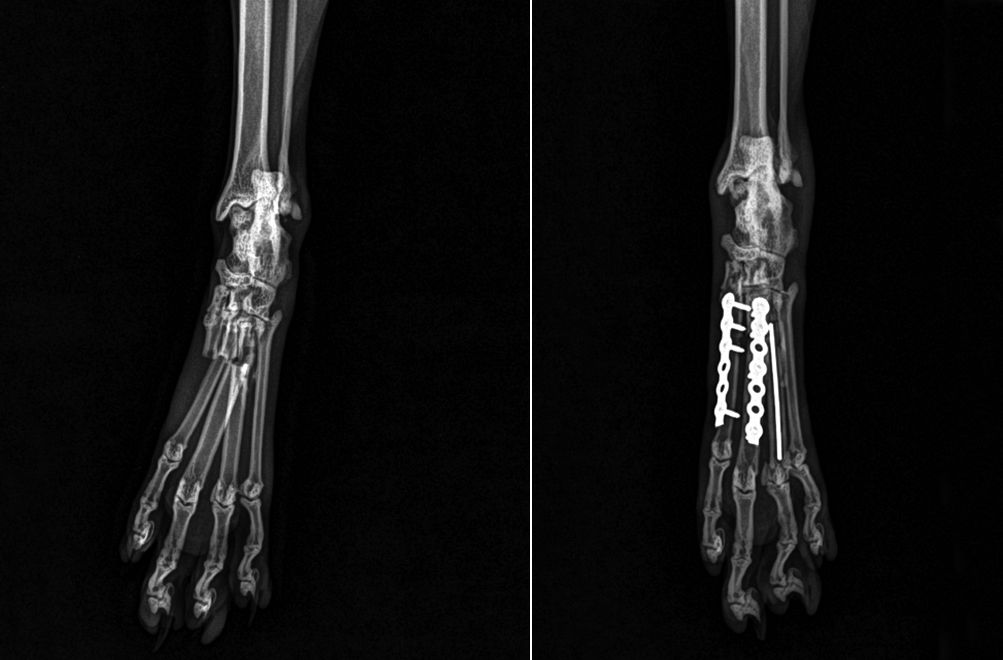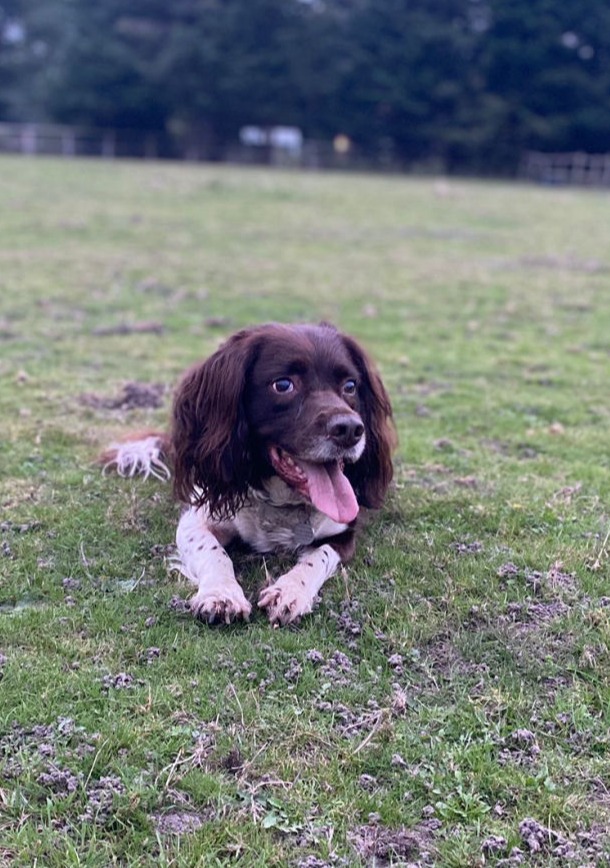
Bruce
Bruce, the very handsome 9 year 8-month-old English Springer Spaniel, presented to his primary care practice in Spring 2023 having become acutely lame on his left pelvic limb. On examination, pain was elicited to his stifle so initial thoughts turned to potential cruciate disease however, as Bruce was otherwise well, his vet recommended a period of conservative management including restricted exercise and the introduction of a non-steroidal anti-inflammatory drug. Unfortunately, Bruce remained lame, so x-rays were the next step.
A free x-ray report was turned around within 24 hours and Bruce was booked in for a plateau levelling procedure; specifically a Cranial Closing Wedge Ostectomy (CCWO), the preferred technique of attending surgeon, Nicci.
On Bruce’s surgery day, Nicci met with his family, discussed the procedure and answered all their questions before admitting him. A medial mini arthrotomy revealed complete rupture of the cranial cruciate ligament, while confirming that the menisci were intact. CCWO was performed with a 20-degree ostectomy, reduced with orthopaedic wire and stabilised with a 3.5mm N2 TPLO plate in compression. Post op x-rays revealed that implants were well placed so Bruce was recovered from his anaesthetic ready to begin his rehab programme. On Bruce’s return home, he was blessed with the care of his exceptionally doting family who made sure that he had all the home comforts he could possibly wish for – a king- size duvet and electric log burner were just a few mentioned! One particular family member that couldn’t see Bruce on his own was Margot, his feline – sister, pictured here looking over her ‘big - brother’s’ temporary castle. Short lead walks and controlled physio exercises were the key to Bruce’s journey before ‘X-ray day’ then came – offering great news as Nicci could confirm that Bruce’s osteotomy was healing nicely. Clinical exam also showed improved joint comfort, no lameness and an all-round happier Bruce, and family! Further rehab commenced after this time, giving Bruce the opportunity to put his ‘sea-legs’ on and take to the under-water-treadmill, hydrotherapy pool and wobble boards at Beacroft Referrals. Recent communication with Bruce’s family has been positive.
